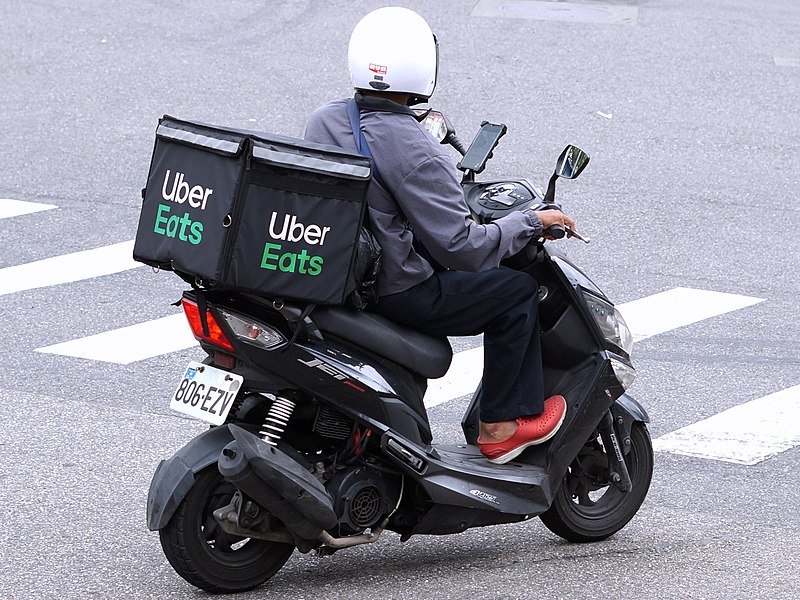 "Uber Eats 806-EZV" by Solomon203 licensed under CC BY-SA 4.0. https://commons.wikimedia.org/wiki/File:Uber_Eats_806-EZV_20201010.jpg
"Uber Eats 806-EZV" by Solomon203 licensed under CC BY-SA 4.0. https://commons.wikimedia.org/wiki/File:Uber_Eats_806-EZV_20201010.jpg
Democrats in Minneapolis want more arbitrary price controls, even though they never work.
Restaurants were hit especially hard by Covid lockdowns. After emergency regulations banned the sale of food and alcohol indoors, restaurants relied on third-party delivery services like DoorDash and Uber Eats to continue serving their customers.
But politicians in more than a dozen cities implemented fee caps on the amount paid by restaurants to use delivery app services, arguing that the move would protect restaurants from high commissions. In reality, however, fee caps shift the cost to the consumer and harm ordinary Americans by constraining supply.
If the new ordinance is approved, Minneapolis will become just the second city in the nation to impose a permanent cap on the fees charged to restaurants by food delivery companies at 10% of the order total. Facing significant losses in revenue, delivery companies will be forced to increase raw delivery costs on their customers, driving down demand and raising prices across the board.
Mayor Jacob Frey approved a temporary version of the fee cap in December 2020, using Covid emergency powers to set a maximum charge of 15% – slightly higher than the newly proposed cap of 10%.
A similar ordinance was unanimously approved in San Francisco in July. Just as in Minneapolis, the fee cap on third-party delivery services was initially approved as an emergency provision but was made permanent just a year later by the city’s Board of Supervisors.
Food delivery companies immediately fought back against San Francisco’s new requirement. In a lawsuit filed by GrubHub and DoorDash, the two companies slam the ordinance as an “irrational law, driven by naked animosity and ill-conceived economic protectionism.”
The suit also highlights the crippling economic consequences of otherwise well-intentioned fee caps: “Costs to facilitate food delivery that are not covered by restaurants will likely shift to consumers — irrespective of whether those restaurants would prefer to bear those costs to increase their own sales — thereby reducing order volume, lowering restaurant revenues, and decreasing earning opportunities for couriers.”
Indeed, fee caps make it impossible for restaurants to bear the costs of delivering food to their customers voluntarily. Both parties contractually agree to the fees that restaurants pay to delivery companies. Rather than offer their own service, restaurants typically find it more profitable to use third-party companies like Postmates, with a full understanding that delivery costs are sometimes high. But under a fee cap, restaurants lose the ability to attract more customers by shouldering a higher portion of the delivery fee.
As with any price control, the costs never honestly go away – instead, they are forcibly passed on to some other entity, usually the consumer. The result is a distorted market in which prices are higher, demand for delivery is lower, and costs skyrocket for businesses and customers alike.
Companies are turning to flat rate “regulatory response fees” to mitigate the harm of fee caps on the food industry. For example, in Portland, Oregon, where the City Council approved a 10% fee cap nearly identical to the current proposal in Minneapolis, UberEats has to make up the lost revenue with an additional $3 surcharge on every order. Companies have implemented similar charges in response to temporary fee caps in Boston, Chicago, Denver, and several other cities. On average, consumers are charged an extra $2 per order in cities with price controls on food delivery.
Politicians assert that companies can shoulder the burden of a fee cap, but not a single delivery app is currently profitable. Though 2020 was the most successful year for food delivery companies to date, DoorDash came in at a $461 million loss, despite making a small profit during one quarter. UberEats suffered an $873 million loss, while GrubHub lost $156 million. These companies each have drivers to pay, employees to support, and a business to grow, but fee caps cut a major source of their revenue and put profitability even farther out of reach.
Customers begrudgingly accepted higher costs in the form of regulatory response fees as the pandemic drove up demand for food delivery. But now, with vaccines widely available and infection rates on the decline, fewer patrons will be willing to pay an extra $2–5 to have their food delivered. Unfortunately, that means fewer drivers and, ultimately, lower access to food delivery services for millions of Americans.
Independent restaurants only stayed afloat during the pandemic lockdowns thanks to the crucial assistance of food delivery. In the face of rising inflation and uncertain economic prospects, restaurants in Minneapolis deserve the choice to freely contract with third-party delivery drivers to find new customers and generate more orders.

